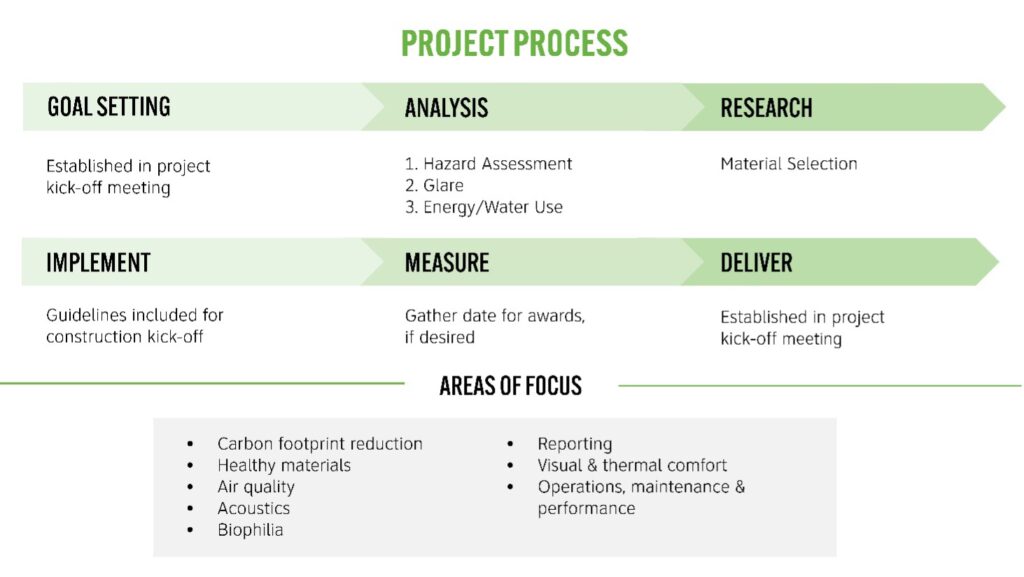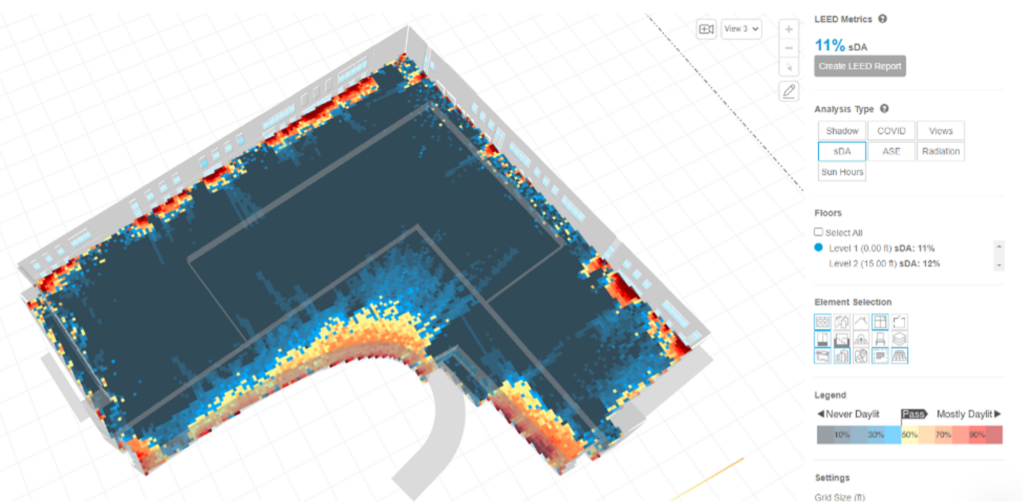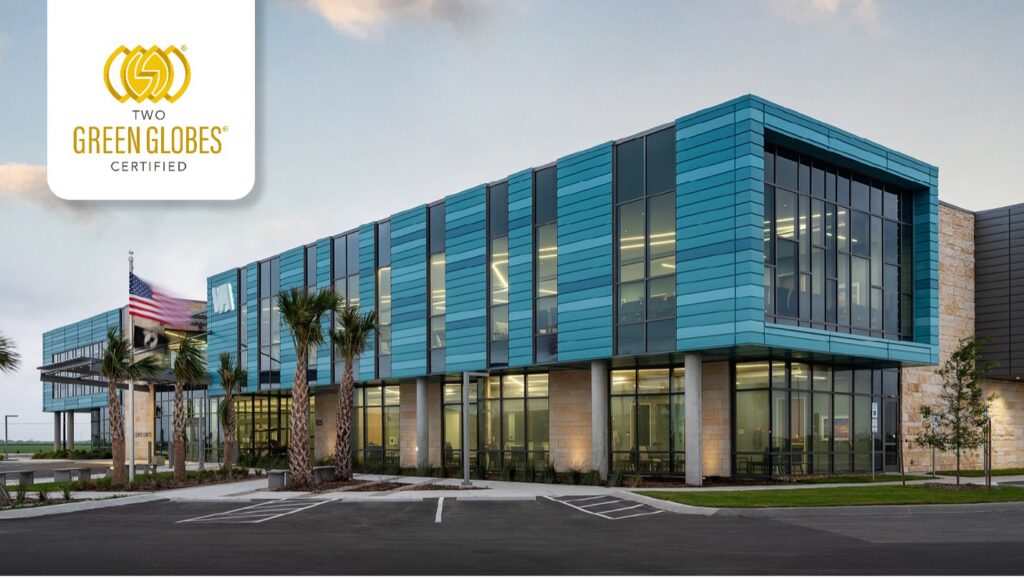By Ashley Langenfeld, PE, GGF, LEED AP BD+C, WELL AP
Associate Vice President | Director of Sustainability, Hoefer Welker
The notion that sustainable design inherently means higher costs is a widespread misconception within the building industry. This myth often stems from an oversimplified view of sustainability, treating it as a one-dimensional aspect or, worse, an afterthought. For instance, the flawed approach of designing a building with little regard for its envelope’s impact on energy consumption, later compensated by expensive mechanical systems. However, this can be prevented through thoughtful, integrated design strategies, allowing projects to achieve higher levels of sustainable success on time and on budget.

Defining Success in Sustainable Terms
A critical first step towards sustainable success is clearly establishing what sustainability means for each project. It might seem straightforward, but sustainability’s definition varies widely among different projects and audiences. Often clients have a hyper-focused or misinformed view of sustainability, so although designers and owners are both saying the same word, they mean entirely different things. For example, most owners do not connect their building as a part of their sustainable initiative or human health or resiliency as a key part of sustainable design. Expanding the definition of what sustainability can be, opens the door to greater possibilities and helps eliminate misdirection or miscommunication which saves time, money, and redesign. Therefore, defining success early is vital for ensuring all parties aim for the same objectives, crafting solutions that support these aims.
Collaboration is Key
Achieving these goals requires a comprehensive, stakeholder-inclusive approach. It’s essential that all design disciplines work in concert towards shared objectives. To avoid setting goals that could add significant cost, or potentially putting two disciplines into conflict, it’s important to include all disciplines throughout the decision process. For example, the optimal building orientation from an energy efficiency standpoint might not be optimal for the grade on the site. Architectural shading devices could work to shade the building, but it might be more cost-effective to coordinate with a landscape architect in allowing trees or other vegetation that were initially planned for the project to aid in shading the building.
Early involvement of general contractors can also address potential budget, schedule, or constructability issues, keeping the project realistic, on budget and aligned with construction timelines. When all parties are at the table, opportunities and possible challenges are more visible rather than running into coordination, code, or schedule issues later in the design process. Including each discipline early in the decision-making process helps avoid cost escalations and potential conflicts.

The Critical Role of the Building Envelope
Contrary to some beliefs, achieving energy efficiency isn’t solely the responsibility of the engineering team. In fact, relying entirely on this team can escalate project costs. Effective, cost-efficient strategies such as optimizing building orientation, massing, and fenestration placement can significantly impact energy use, occupant comfort, and performance at no additional cost. Properly analyzed and implemented, these strategies can even reduce the scale of mechanical systems needed by lowering energy loads.
Leveraging Incentives
A frequent oversight is the underutilization of Federal government incentives. Both for-profit and non-profit entities could benefit significantly from funds available through initiatives like the Inflation Reduction Act (IRA). Furthermore, many utilities offer energy efficiency incentives worth exploring. Maximizing such incentives and resources can make sustainable investments payback faster.
Sustainable design offers a plethora of opportunities for pragmatic, cost-effective solutions. The path to sustainability doesn’t have to be limited. By partnering with sustainably-focused design teams and working cohesively toward a shared goal, the possibilities for sustainable design are endless. Engaging in such partnerships not only furthers environmental goals but also demonstrates that sustainable design can be achieved efficiently and within financial constraints. Taking a proactive stance ensures that sustainable architecture can be both environmentally responsible and financially viable, opening up endless avenues for innovation and cost-effective implementation in the realm of sustainable design.

[source: https://thegbi.org/sustainable-design-doesnt-need-to-cost-more/]

Leave a Reply
You must be logged in to post a comment.